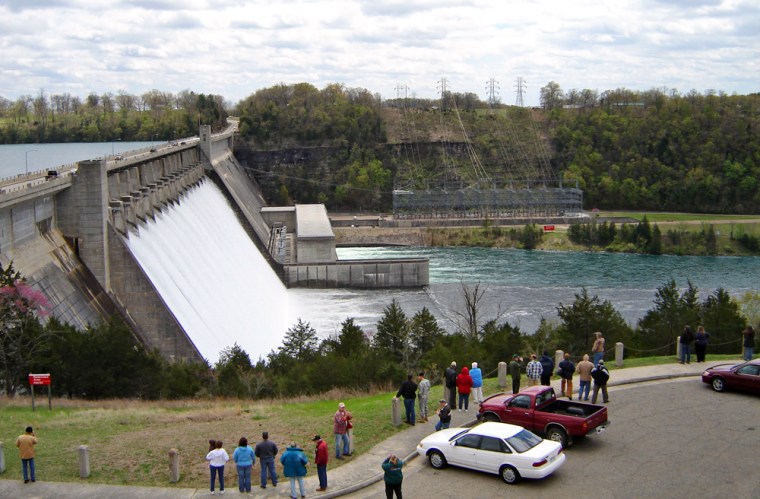Public tours at one of the largest dams in the southeastern United States have resumed — but on a limited basis because of continuing security concerns after the Sept. 11 terrorist attacks.
The powerhouse at Bull Shoals Dam was among the first hydroelectric plants of the U.S. Army Corps of Engineers to conduct regularly scheduled tours since the attacks nearly seven years ago, district spokesman P.J. Spaul said.
A personnel shortage also kept the corps from starting up tours again, he said. But the agency worked out a plan with the Bull Shoals-White River State Park to conduct the program with state staff and volunteers from the park's visitors center that overlooks the dam.
"They will take them in and show them some things. They will go down into a part of the dam, not an area where we are concerned about security, but the generator flow where they can see the big units," said Tracy Fancher, the corps' operations manager who oversees the dam.
The hydroelectric plant and four other plants the corps operates on the White River produce enough electricity to light 170,000 homes, or 1.7 billion kilowatt-hours, Spaul said.
"This was completely emission free and there was not a barrel of oil burned either," he said. "If you burn coal to produce that much energy, you would also produce about 1.5 million tons of greenhouse gas emissions."
Fancher describes the public works project, completed in 1951, as remarkable for its size and for the "true multipurpose" features of flood control, hydroelectric power, recreation and drinking water.
The dam was one of the largest engineering projects ever undertaken when construction began in 1947 — initially just for flood control. The Bull Shoals Dam stretches 2,256 feet across the river, rises 256 feet from the streambed and holds about 2.1 million cubic yards of concrete.
The powerhouse has eight electric generators, where other dams in the region typically have two or four generators, Fancher said. The Southwest Power Administration of the Department of Energy markets the power wholesale to utility companies in the southwest United States.
Each day, except Mondays, groups of about 15 can tour the powerhouse. A total of eight tours are scheduled during the week, and visitors are advised to make reservations.
Tour members meet at the visitors center and receive instructions on restrictions, such as where they can leave their cameras or cell phones (they can't be taken into the dam). Visitors — after showing photo identification — travel by van through a locked gate to the dam, where they go up some steps and into the structure. They receive headsets so they can hear the guide, speaking by microphone, over the noise of the generators. The entire tour takes about 45 minutes.
"When you can see, smell, hear, touch something you have a lot better appreciation of it," Fancher said. "And that's part of the idea. We want them to experience that."
Spaul said the corps continually evaluates security at the dam and could discontinue the tours at any time if deemed necessary.
